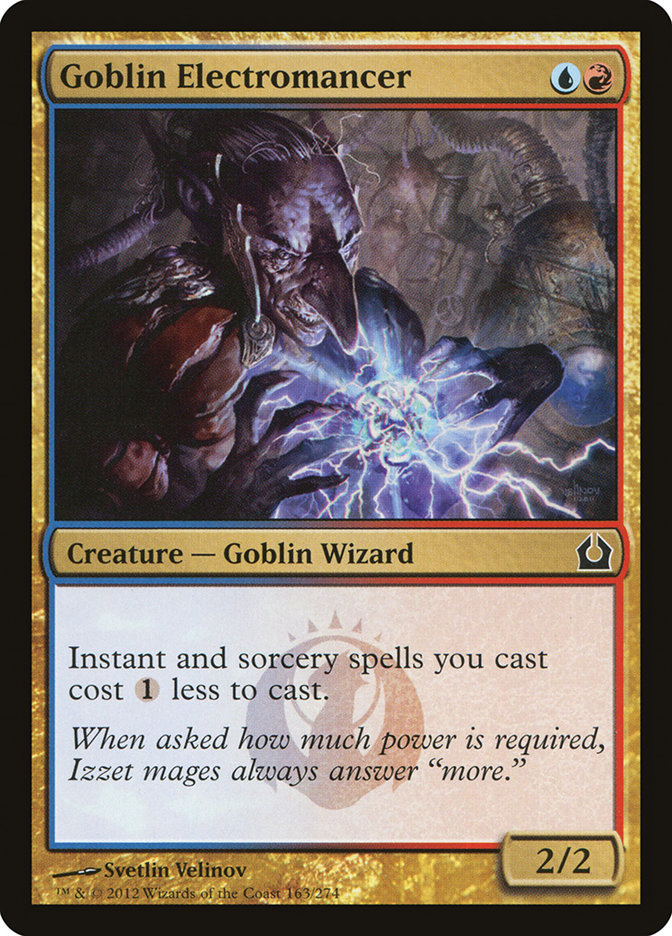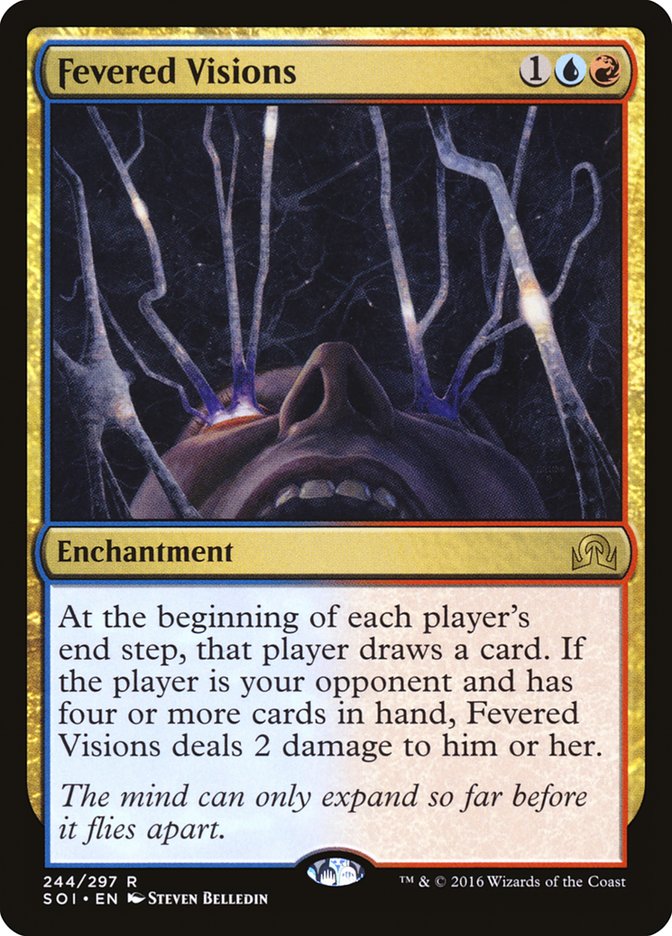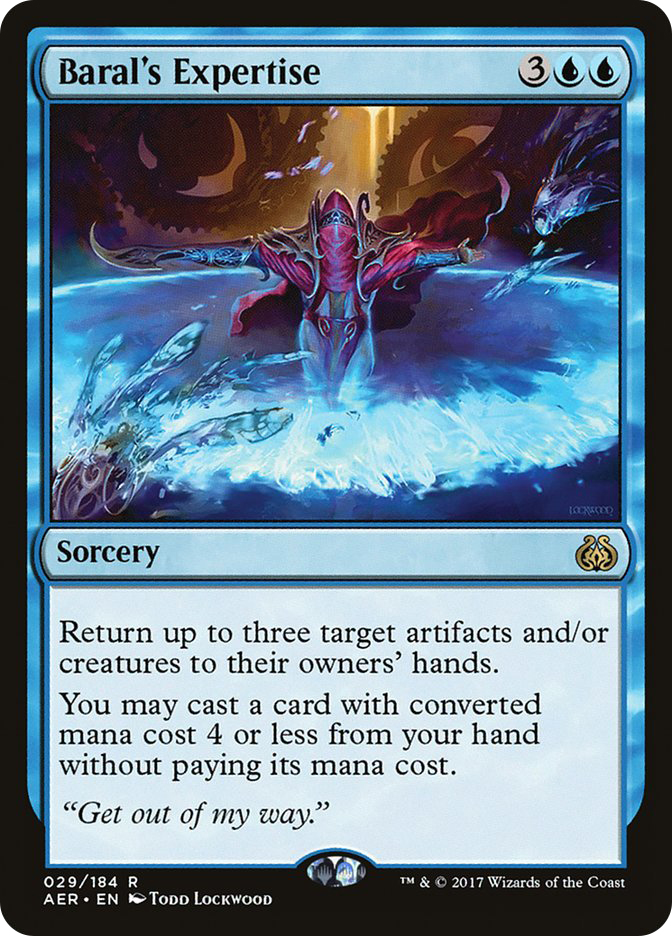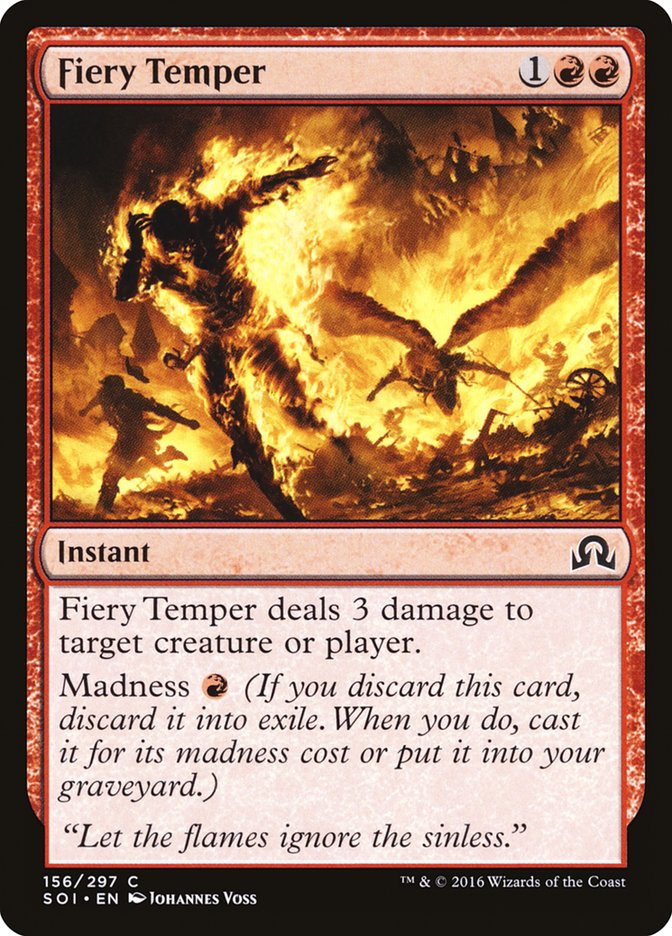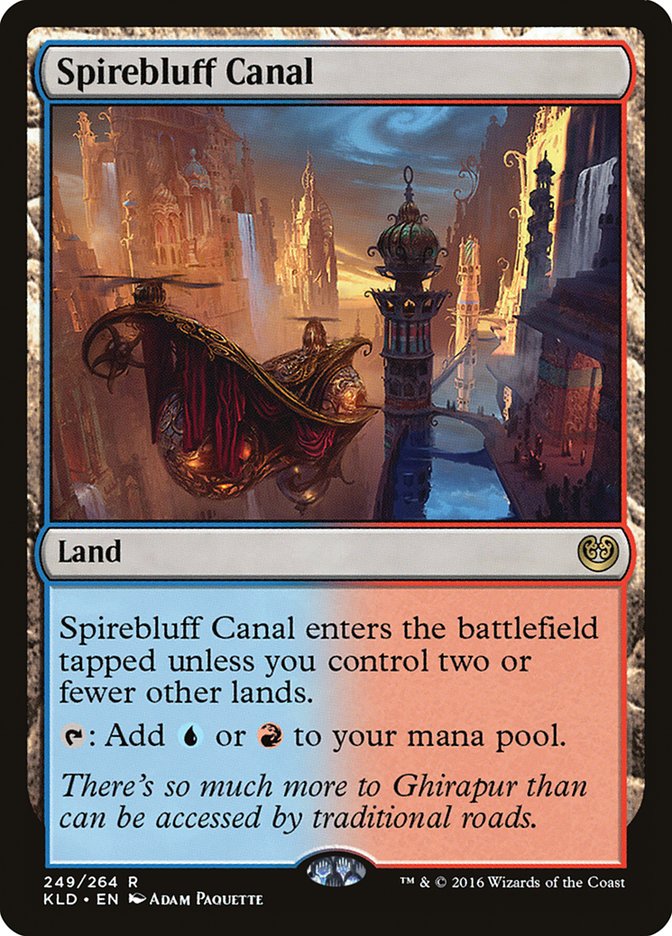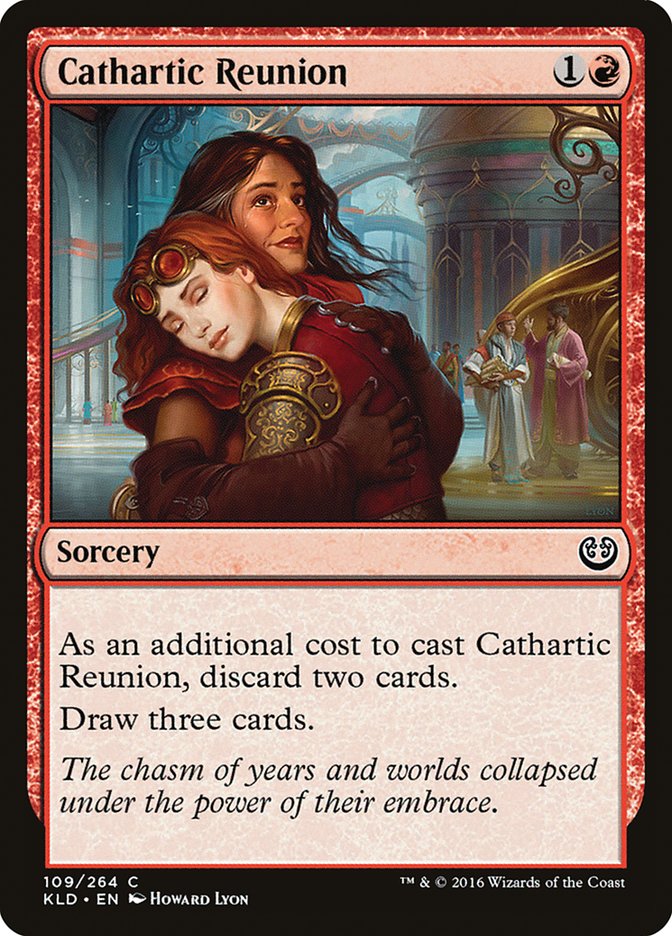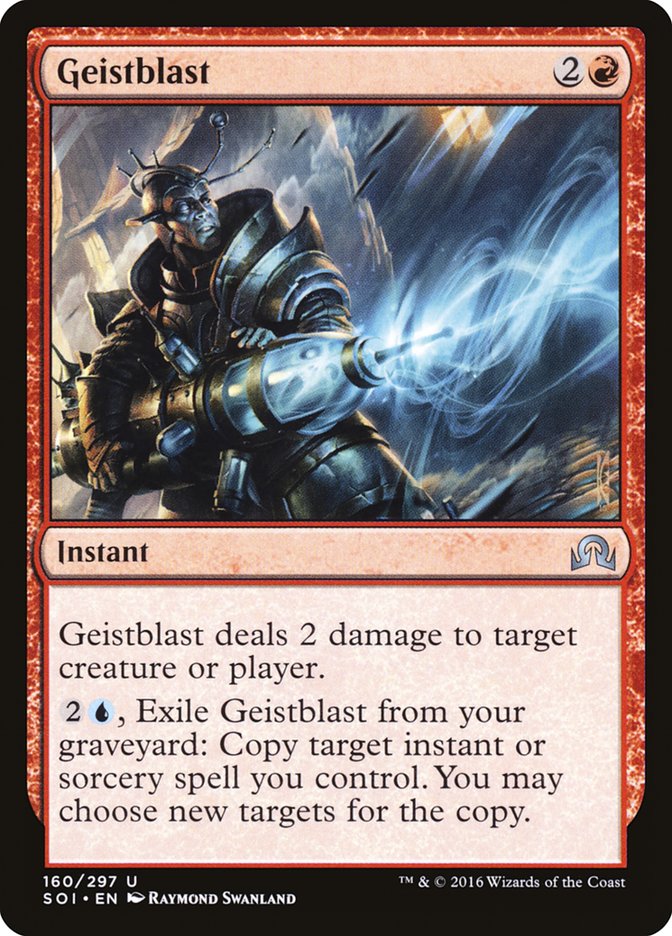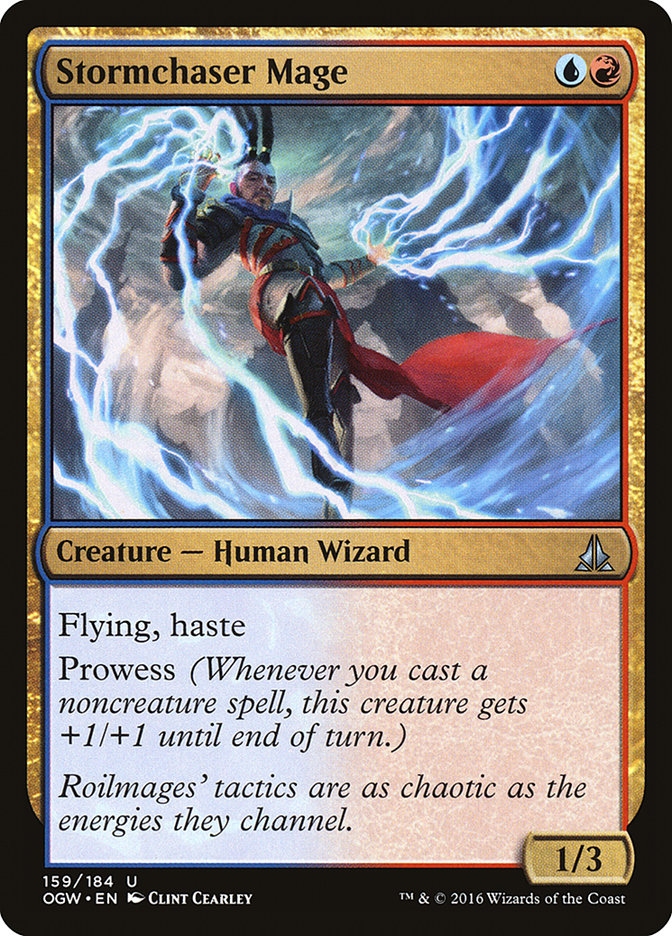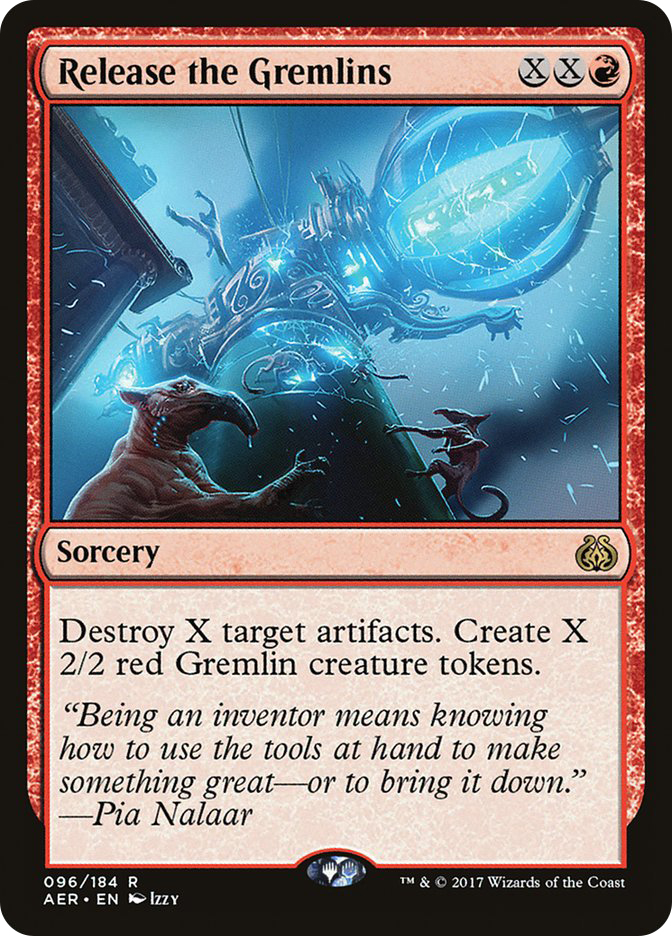Cost reducers have been praised by some, dismissed by others, but tried by everyone.
Reducing the cost of the spells you play may seem awesome at the outset; who doesn’t like to get to as close to “free spells” as possible? Casual and/or easily excited players start to picture the curve. “Yeah, can you imagine? Turn 2 Heartless Summoning, turn 3 Thragtusk! So sick, brah!” This kind of mentality has always kept me firmly in the camp for cost reducers, but it’s important to remember that cost reduction is highly subjective, and its effectiveness is difficult to translate into true advantage if you’re building with a couple foolish, albeit seemingly intuitive assumptions.
Today, we’re going to talk about one of my favorite cards from Aether Revolt, and a deck that finally utilizes him to his full potential: Baral, Chief of Compliance.
As an instant and sorcery cost-reducer, he’s already got me interested.
Return to Ravnica was a great Limited block, and this little Grizzly Bear with a cost reduction was a critical common of the Izzet-colored decks, making overload easier to obtain on cards like Mizzium Mortars and Blustersquall.
The Electromancer and Baral, Chief of Compliance share a lot of traits, and we’re going to take a critical lesson from it and learn to dodge some deckbuilding pitfalls before we build with our new legendary Wizard.
First, the reduction must be impactful. I’m sure you’ve been in this situation, maybe with something along the lines of only Goblin Electromancer on the battlefield. You’ve got one land in hand and five on the battlefield. You draw a four-mana sorcery, say, Traitorous Instinct. How much value does Goblin Electomancer’s reduction provide as you tap three untapped lands instead of four? Well, nothing, really; you weren’t going to use the other mana anyway. The reduction’s impact was mitigated by circumstances. The more you can do in a turn, the better reduction is. Casting one spell for one less but not having a follow-up to leverage it is pointless. Thus, we have to make sure that we have plenty of spells in hand, all of which benefit from the reduction.
But wait! Pitfall number two is an uncomfortable dose of reality in a world of Magical Christmas Land (of which, as I’ve said before, I am a full-time citizen): if you don’t draw your reducer, what happens to all those clunky cards you have in your hand?
Awkward.
In Modern, things are worse; a turn 1 Thoughtseize or Inquisition of Kozilek plucks the Heartless Summoning out of your hand, and you’ve got a pile of utter nonsense. This kind of deck is so reliant on cost reduction that it’s impossible or, at the very least, horrendously uncomfortable to play. A deck must take advantage of good spells if it can’t cast them effectively, or, as the case may be in older formats, the deck is well-enough insulated to weather removal or consistent enough to always find the missing piece. So, lesson two: make sure the cards in your deck don’t need reduction to provide value.
As a pseudo-lesson three that combines the first two, remember that variance is a driving force in Magic,especially in the relatively low-powered world of Standard. Curving out off a reduction card, especially one that can die to the minutely costed Fatal Push, is not reliable enough to depend on. Look at Ruin in Their Wake. This card was sometimes a Rampant Growth, but only in certain decks, with considerable color/land deckbuilding resources set aside, and with a solid stroke of luck. Even in those cases where you cracked an Evolving Wilds for a Wastes on turn 1, was it ever worth it in the end?
Okay, so those are things to remember. I like Baral, Chief of Compliance, so I want to make sure that I get him lined up with the best deck.
Little did I realize that, when I started crafting a deck for Baral, the best deck for him already exists.
Even with half of what’s now Standard legal having being released since Fevered Visions first appeared, it’s still one of my favorite cards in Standard. I’ve featured it in five articles over the past year, so I won’t try to bore you with the basics; instead, we’re going to look at something critical that’s come about since our last Fevered foray: Baral’s Expertise.
Fevered Visions being paired with bounce spells as pseudo-hard removal has been the modus operandi of most successful iterations of this deck, especially thanks to cards like Eldritch Moon’s Unsubstantiate. Baral’s Expertise raises the bar, though, providing the powerful sweeping coverage that you need to keep attackers off your back plus an additional, exceptional benefit. Before Baral’s Expertise, some decks utilized Crush of Tentacles as a means to reset untenable battlefield states, but this also meant you’d bounce your own Fevered Visions, taking the pressure off your opponent while you took precious time rebuilding as well.
Baral’s Expertise serves a similar function while getting you ahead on the battlefield, efficiently spending your mana to keep the pressure on. While Fevered Visions decks often feel like control decks, they’re actually much more about tempo, forcing you to use your mana inefficiently while under considerable time pressure.
Baral, Chief of Compliance reduces the cost even more, and being able to cast critical spells like Fevered Visions off Baral’s Expertise is exactly why this deck, more than any other, is well-suited to manage the spell’s namesake.
While we’re on the topic of cost reduction, let’s look at another critical spell that can be extraordinary if its special condition for casting is met enough.
Out of the nine decks I’ve covered that feature Fevered Visions, five of them feature this card. While Shock is certainly the go-to one-mana answer in red these days, let’s not forget about this Lightning Bolt. When cast for its madness cost, it’s just actually Lightning Bolt. With Baral, Chief of Compliance, it’s a slightly harder-to-cast Lightning Strike. Double red is no joke, but thankfully, Kaladesh helped that a lot.
The inclusion of the enemy-colored cycle of these lands provided a huge boon for R/W Vehicles and B/G Delirium decks. Now Spirebluff Canal makes this deck more consistent than ever.
Combined with solid two-mana spells, a helpful reducer, and a level of burn pressure your opponent can’t overcome, let’s take yet another look at the new and improved Fevered Visions.
Creatures (4)
Lands (21)
Spells (35)

Creatures
I don’t know if you’ve noticed, but low-creature-count decks don’t really exist anymore. Gone are the days of 27 lands, 32 spells, and one untargetable creature. Between Vehicles, creature-lands, and the pressure planeswalkers can have if not killed immediately, creatures are always present in one form or another in today’s Standard. This means your opponents will have plenty of ways to deal with them. If you don’t have many creatures, the means by which they deal with them will clog up their hand. All good news for Fevered Visions.
Baral, Chief of Compliance has a couple of strikes against him when compared to Goblin Electromancer. First, he has one power. When your opponent is attempting to keep a threat on the ground, the one power you smack them with isn’t going to add up as quickly. Second, he’s legendary, meaning that Baral’s benefit cannot be multiplied.
However, he does have an intriguing “looter clause” that applies when you counter a spell. Luckily for us, the card we discard can likely be cast, allowing counter spells to simply draw a card. Sadly, Unsubstantiate is not countering a spell, much like Venser, Shaper Savant doesn’t.
Spells
The spell list is not heavily overhauled, but there is a critical piece that was intentionally omitted: Cathartic Reunion.
Cathartic Reunion is a card that has enormous potential: for two mana (or one, with Baral, Chief of Compliance), you can see three brand-new cards. If you can leverage the cards you’ve discard, even better! However, having two cards you don’t mind pitching in your hand is quite a rare occurrence in this deck. While originally played in conjunction with the extant Tomenting Voice, it has since been completely replaced by this weaker, but less drastic version.
Instead of going through the more straightforward choices, let’s look at those that stand out.
Negate is the quintessential sideboard counterspell. However, in this deck, it functions as a hard Spell Pierce with Baral, Chief of Compliance, plus it conveniently handles everything we can’t normally touch. Creatures are tied up with Just the Wind, Fiery Temper, Baral’s Expertise, and Lightning Axe. Everything else can be handled by Negate. It feels great to hold answers to any possible threat in your hand, and with the amount of filtering the deck provides, both through Tormenting Voice and the cleanup step, we can always pitch extras.
I have a love-hate relationship with Geistblast, but this deck helps its biggest flaw: cost. Spending three mana for a Shock, especially in a format with actual Shock, feels awful. Casting it for two mana seems acceptable given its alternative function. Casting it with Baral’s Expertise, especially when you have the backbreaking follow-up of copied burn, is exactly where it’s at for me.
Lands
Fevered Visions doesn’t like land very much. Extra copies don’t help your hand strength, as you can only play one per turn, but you need them to get off the ground. Once you’ve drawn three, you’re pretty much done, so those lands we have must count for a lot. Wandering Fumarole is a great land, but you won’t likely want to activate it in Game 1, allowing your opponent to spend a removal spell they’ve been saving in their hand. Once they’ve sideboarded removal out, the Fumarole becomes much more menacing.
While I like Aether Hub, there’s no room for the Harnessed Lightnings to support it, and the color demands on this deck are high, not broad. As soon as I burn the energy counter, the Hub becomes a liability.
Sideboard
Incendiary Flow comes in when you need to burn them down more quickly or you need more removal. It’s easy; in Game 2, sideboard out your four worst cards for these. Maybe those four cards are Baral, Chief of Compliance.
Release the Gremlins is an exceptional way to handle a deck that likes lots of card draw and lots of cheap artifacts. Blast them apart with this card, get 2/2s, and watch as your opponent curses themselves for sideboarding out Declaration in Stone. Similarly, Rise from the Tides gets considerably better when you can cast it 4U and keep up counterspell mana. While I originally tested with a lot of Kari Zev’s Expertise, it was far too conditional for maindeck inclusion, even as a singleton. For standalone threats, this card is outstanding.
Stormchaser Mage was a reaction to a deck that’s seeing a resurgence online: Spirits. Stormchaser Mage blocks and attacks through most Spirits without help. Moreover, once they’ve sideboarded out removal, this is an evasive threat that only compounds in power with each card you draw.
I tested this deck far more extensively than normal, and not necessarily because I wanted to be thorough; I just had too much fun to stop playing with it.
I put in reps against B/G Delirium, a deck that gets obliterated by Fevered Visions in Game 1, and I also shut down several different Jeskai Saheeli variants. The singularity and reliability of my threats was unbelievable, and casting Baral’s Expertise for four mana, followed by a free Fevered Visions, was the absolute highlight of the experience.
Baral, Chief of Compliance and his reduction made an enormous difference, and the deck could not have functioned as smoothly without it. I would happily cast him on turn 3, keeping an untapped mana ready to kill, counter, or bounce whatever came next. Taking one turn off the deck’s gameplan proved to be incredibly helpful.
Sideboarding into more threats in Games 2 and 3 seemed to be the best plan; while they sideboarded in Fragmentize, Natural State, or even the dubious Anguished Unmaking, I had plenty of threats to attack from multiple angles. The deck played smoothly, intuitively, and quickly, making for sufficient testing to both recommend and gush a bit about it.
This may not be the most groundbreaking deck you’ve seen come out of my decks on Aether Revolt, but it might be the most consistent and reliable win converter.
Has one of your pet cards from earlier in Standard’s retinue gotten a huge sleeper boost from Aether Revolt?



